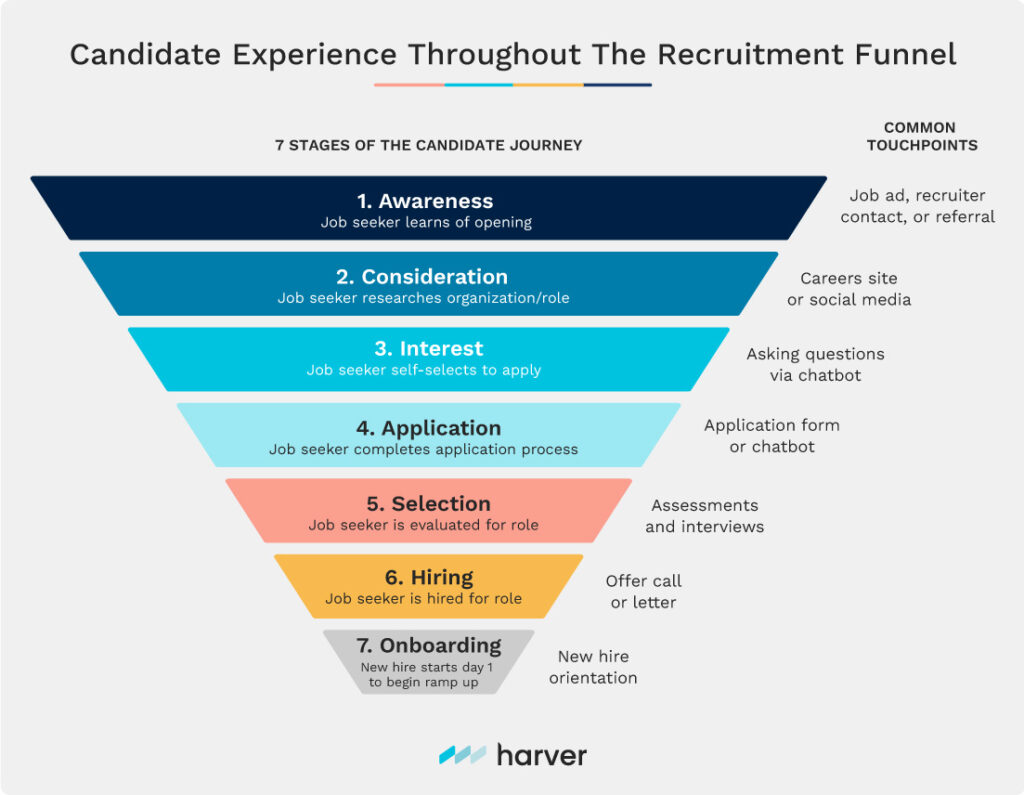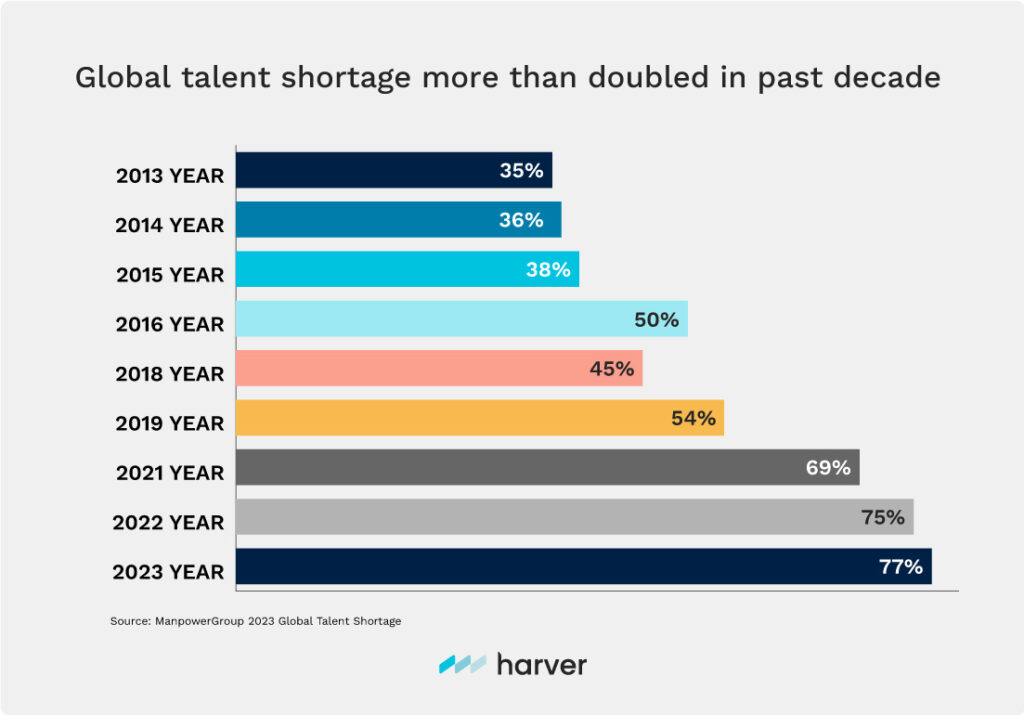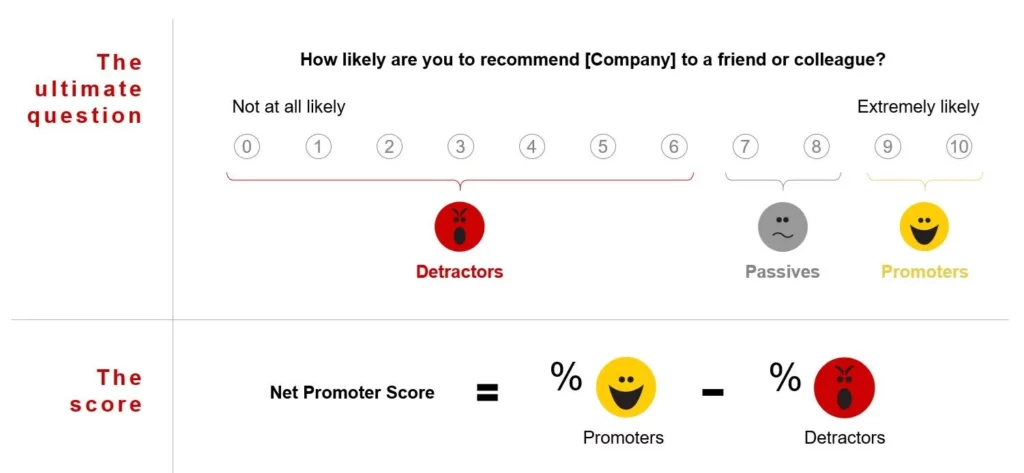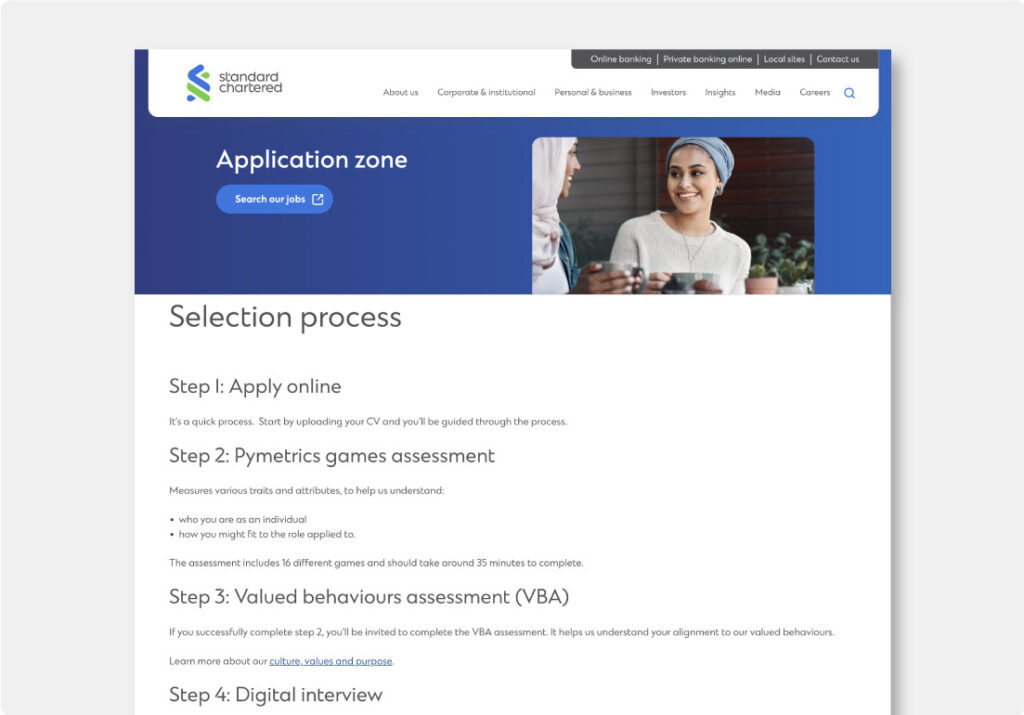Did you know that the global talent shortage is at a 17-year-high, according to The Talent Board? As a result, employers are making candidate experience a priority in recruitment. In fact, candidate experience is the #2 priority for employers this year and was even the #1 priority for few years prior.
By tracking candidate satisfaction and using results to improve your recruiting process, you can boost your positive candidate experience to help be a known employer of choice. In addition to reducing drop-off during recruitment, this can also attract more (and better fit) talent to apply.
Ready to jump into your guide to candidate experience for recruiting professionals? You’ll learn how to measure candidate experience, candidate experience best practices to improve candidate satisfaction, and more.
What's in?
What is candidate experience?
Candidate experience is how job seekers feel about your organization and its hiring process. This sentiment is based on the candidates’ journey from awareness and consideration to hiring and onboarding.
Each interaction a candidate has with your organization influences whether they have a positive or negative experience overall. These touchpoints can be with recruiters and hiring managers, or with technology like conversational screening chatbots or job ads. Related: Enterprise guide to conversational chatbots

What makes for a positive candidate experience?
- Timely communication with recruiters, like responding to questions or providing status updates
- Convenient and engaging application process, like a conversational chatbot instead of a slow, boring form
- Fast time-to-hire, such as automated interview scheduling to streamline back and forth
- Nurturing relationships with rejected candidates, such as following up with constructive feedback
Why candidate experience is important in recruiting
Candidate experience in recruiting is important because it directly impacts your organization’s ability to attract and hire the talent you need. With 77% of organizations struggling to find skilled talent, it’s more important than ever to boost competitive differentiators like a positive candidate experience. In fact, employers reporting difficulty hiring has more than doubled in the past 10 years.

Next, consider that 68% of global talent professionals say competition for talent will increase this year. What if your recruitment process doesn’t stand out with a positive candidate experience? Then in-demand candidates will go elsewhere — and fast.
Another reason why candidate experience matters: positive or negative candidate experience impacts your hiring and wider business goals. Two key things to know from The Talent Board, who conduct candidate experience research on candidates from around the world.
- Two-thirds of candidates share positive or negative experiences publicly
- Candidates are 20% more willing to refer colleagues to top candidate experience employers
Think about how valuable referrals are to your organization’s performance. Measuring and investing in your candidate experience is critical for competing for in-demand talent.
How to measure candidate experience
The most common way to measure candidate experience is to use candidate input to track Candidate Net Promoter Score (CNPS or cNPS).
NPS is also used in marketing to measure brand affinity, providing insights into “promoters” vs “passives” vs “detractors”. In the talent world, many employers measure candidate experience by using CNPS surveys. This allows employers to gauge their positive or negative candidate experience.

How to measure candidate experience using CNPS:
- Include a brief CNPS survey at standardized moments in the recruiting process
- Ask candidates a version of “How likely are you that a friend or colleague apply for a job here?”, measured on a 0-10 scale (0 = not likely at all and 10 = very likely)
- Determine your CNPS by taking the percentage of promoters (who answered 9 or 10) and subtracting the percentage of detractors (who answered 0-6)
For example:
50% of all candidates answered 9-10 (promoters)
30% of all candidates answered 7-8 (passives – ignore)
20% of all candidates answered 0-6 (detractors)
Your CNPS score would be 50 (promoters) – 20 (detractors) = 30
What if my organization uses candidate satisfaction surveys that on a 4- or 5-point scale? The Talent Board recommends converting that into CNPS by taking your percentage of candidates “most likely to refer” and subtracting the percentage of candidates “least likely to refer.”
Like what you see?
Don’t miss out. Subscribe to our quarterly digest to get the latest TA and TM resources delivered right to your inbox.
Candidate experience best practices
Here are 5 candidate experience best practices, based on common success factors of Candidate Experience (CandE) Award winners from The Talent Board. Follow these tips on how to improve candidate experience and boost your employer brand.
1. Communicate consistently throughout the process
Candidates want to feel valued, including getting answers to questions and staying up to date on status. Use HR tech like AI-powered chatbots to handle lower level questions or have recruiters test out generative AI tools to save time writing custom responses.
2. Set timely expectations about the recruiting process
Transparency goes a long way to improving candidate experience. Early and often, let candidates know what to expect at each stage and what’s coming next. For instance, Standard Chartered Bank includes an Application Zone on their careers site for always-on level setting.

3. Create feedback loops to request and share
Requesting feedback helps to measure your candidate experience and to identify what can be improved. It also shows candidates you care, even if they don’t respond. Following up with rejected candidates is equally important. Share personalized feedback with finalists so they get something of value.
4. Be transparent and accountable
Research from The Talent Board shows transparency correlates with higher positive candidate experience ratings and willingness to re-engage in the future. Follow through on promises – transparency can’t build trust without accountability.
5. Ensure and highlight perception of fairness
The Talent Board notes that “candidates understand that companies can’t hire everyone, but they want to be assured of a fair and open process.” Even if rejected, candidates who walk away feeling the process was fair are more likely to have a positive candidate experience.
Candidate experience resources
Take the next step with how to improve candidate experience in recruiting. Learn more from these popular resources:


